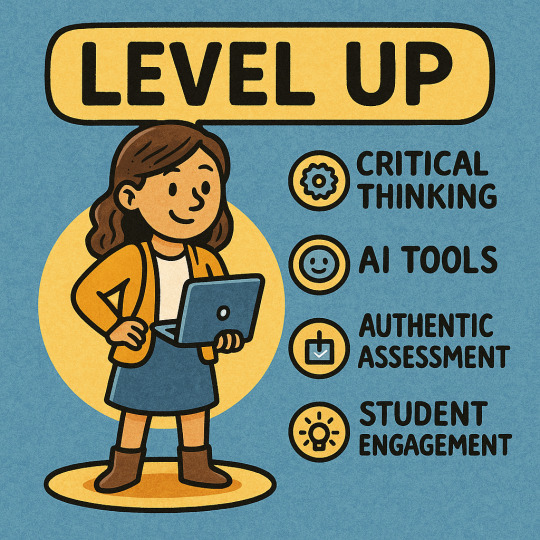#Reflective Practice
Explore tagged Tumblr posts
Text
Inside the writing process
Jemisin rocks!
0 notes
Text
Explore the meaning of manaakitanga in adult education — how intentional care, inclusive onboarding, and everyday respect can uplift learner wellbeing and transform your teaching practice.

View On WordPress
#adult education#Ako Māori#apatoru Values#Culturally Responsive Teaching#Educator Development#Inclusive Practice#Kaupapa Māori in Education#Learner Wellbeing#Manaakitanga#Pathways Awarua#Reflective Practice#Vocational Learning
0 notes
Text









Full moon lunar eclipse in Virgo March 14 2025
0 notes
Text
Intentional Rest: How Pausing Helps You Move Forward
Intentional Rest: How Pausing Helps You Move Forward
Intentional Rest: How Pausing Helps You Move Forward In a world that often glorifies hustle and overworking, pausing can feel uncomfortable, even guilt-inducing. When you move from task to task or try to meet every demand, slowing down may seem counterproductive. The truth is, intentional rest doesn’t stop your progress; it creates space for energy, clarity, and growth to flourish. What is…
#Accountability#Ambition#Balance#Body Alignment#Body Scan#Burnout Prevention#Clarity#Connection#Creativity#Daily Routine#Digital Detox#Empowerment#Energy Alignment#Focus#Gentle Movement#Growth#Healing Journey#Healing through Visions#Holistic Wellness#Intentional Living#Intentional Rest#Life Balance#Life Coaching#Mindfulness#Morning Rituals#Personal Development#Personal Growth#Productivity#Reflective Practice#Relaxation
0 notes
Text

Bunny Dragon!
#liteeart#0505#may 2025#sona#dragon#furry#more reflective material practice! pretty happy with how it turned out!#i also really like the outfit... gotta incorporate a hoodie whenever possible pff
4K notes
·
View notes
Text
Blackout Poetry Lesson: She is much more creative with these poems than I have ever been!
I love this person’s blackout poetry lesson and creativity, and I’m really thinking that I want to try it. When I look at the words she’s focusing on ant the emotion and tone that she can convey with her line work, it just really has me thinking that this could be a good way for students to demonstrate what they understand about a text while also highlighting some keywords and phrases that we can…
youtube
View On WordPress
#Activity to Try#Art#Blackout Poetry#Comprehension#Education#Literacy#Making Comprehension Visible#Reflective Practice#Scaffolding#Teacher Goals#Youtube
0 notes
Text
Not the one thing. Our own narratives are constrained. That said, there is great power in reframing stories of self
until death, all defeats are psychological
101 notes
·
View notes
Text
Lessons in Leadership: Soaring with the Winds of Life
In learning how to fly an airplane, one of the first lessons has to do with understanding winds. Winds come in basically three types; Head winds – those hit you right in the face Tail winds – those from behind Cross winds – those at angles from the side I believe the challenges we face in life and in business model these three types of wind as well. If we consider all the forms of challenge…

View On WordPress
#Chicago#Dallas#Doug Thorpe#emotional intelligence#entrepreneur#executive coaching#Executive Coaching And Mentoring#Executive Coaching Courses#Executive Coaching Edge#Executive Coaching Exercises#Executive Coaching Icf#Executive Coaching Institute#Executive Coaching Services#Executive Coaching Toolkit#Executive Coaching Topics#Houston#Key Leadership Qualities#Leadership#management#Reflective Practice#work-life balance
0 notes
Text
Reflecting Practice using Philosophical Journaling
What happens to us is not as important as the meaning we assign to it. Journaling helps sort this out. – Michael Hyatt There are four keywords in the title (reflection, jounaling, philosophy, practice). We have words and we have key words, the words that unlock hidden treasure of knowledge. How to locate those key words? We have set mechanisms to do so in the digital world which is intrinsically…

View On WordPress
0 notes
Text
Sobbing uncontrollably reading through a dissertation about the college experience of students with ADHD. It is like reading a report about my life that just says over and over "My experiences are real. My hardships are real. I am not lazy, I am not dumb. My struggles were not my fault, and they were not a moral failing. The failure was with the system, not with me."
Here's a line that got me in particular:
"Hotez et al.(2022) compared the health, academic, and non-academic capacities of a nationally representative sample of U.S. first-year college students with ADHD and without ADHD. Students with ADHD self-reported lower academic aspirations and more feelings of depression and overwhelm, ranking themselves lower in their general emotional health. The fact that students with ADHD scored in the highest 10th percentile for many non-academic traits, such as artistic ability, computer skills, creativity, public speaking, social confidence, self-understanding and understanding of others, compassion, and risk-tasking, suggests that this population has strengths that are frequently underappreciated in academia."
(the paper is a thesis called "Understanding the Collegiate Experience for Students With ADHD" by Gia Long, 2022)
#adhd#actually adhd#i often hyperbolize but i am dead serious when i say sobbing uncontrollably. this is why i was putting off this assignment.#1000 years of hell to professors who assign self-reflection papers /hj#i dont feel comfy posting the pdf bc its not mine butttt.. i will share it to people who dm me.#edit: pages 80-85#edit: thank you to everyone who reached out and asked for the pdf!! i wasn’t expecting this reaction#keep reaching out I’ll keep sending it#if anyone is interested but struggles to read academic papers pls ask me for help bc I’ve gotten a lot of practice with them and am Glad to#expand someone’s access to a paper like this
4K notes
·
View notes
Text

Rorrim is such a delightful creature to encounter man I wish it wasn't a one time thing :( "smiles are never out of style" NEITHER ARE YOU KING COME BACK
#Undertale yellow#Uty#Uty Dalv#Uty rorrim#Dalv uty#Dalv#Rorrim#Rorrim uty#Clemont_ine#Been thinking about vampire stuff recently and how it could relate to Dalv#Is he allergic to garlic. Does he wait awkwardly outside his friends' doors for them to verbally invite him in.#I can see the second being pretty silly. Dalv trying to enter Starlo's / the feisty five's house and star just is not getting it at all#“..can I come in?” “The door's open partner!” “Yes I see that but can I come in? Am I allowed??” “??? You're my friend!” “STARLO PLEASE.”#Whether it's on purpose or a complete accident is up for interpretation 😭😭#Anyway for some reason Im intrigued by the fact that the only vampire and mirror monsters are encountered in the same place#Since yk#Vampires don't have reflections#I don't think they do anyway?#Whatever this is a long winded way of saying they need to be buddies 😁😁 let Dalv befriend the monsters of the ruins after he heals#Please and thank yoj#Feat me forcing myself to try and do backgrounds more lord knows I need the practice 😭😭😭
246 notes
·
View notes
Text
Ok but guys isn't it actually crazy how Eugene Roe's presence is literally defined by the ineffable silence of God....ep 6 has no narrative voice beyond the languageless vision of Roe's literal perspective....he brings with him silence in every episode he's in like the chaos after Jackson blows himself up stills completely when Doc runs in - they all go silent & frozen & breathless - when any man is wounded the very concept of words beyond orders fail...he talks about how Renee is blessed to calm the wounded she treats but it's evident that he brings with him something even graver than calm; it's unutterable, literally, it's a prayer, it's a response to the silence we meet (Roe meets) in his prayers (it's a reflection on the insane power we - they - have over our own - and their own - mortality - that silent and sometimes apparently godlike capacity to return (to the front lines) from the dead (that hell of lost brotherhood in the hospitals)?)
#and that's why I haven't found it in myself to write roe#because after all what is there to write#empty pages. logs of the dead. remembered prayers#its so sensory and so antithetical to the practical requirements of language#he doesn't describe - he doesn't interpret - he doesn't reflect - he experiences in the immediate#crazyyyyyyy#band of brothers#eugene roe#doc roe#hbo war#ww2#personal#bastogne#episode 6
422 notes
·
View notes
Text
🚨 Assessment is evolving — are we keeping up? Generative AI tools like ChatGPT aren’t going away. So instead of banning them, what if we redesigned how we assess learning? 👉 I just published a new piece on how Aotearoa’s tertiary sector can shift from policing AI use to purposeful integration. We’re talking critical thinking, process-over-product, and future-ready assessment strategies. 💬 Educators, designers, disruptors — what’s your take? How are YOU adapting? 🔗 Read it here: [insert blog URL] 📘 And if you want the deep dive → Education is Over. Adapt or Die #AIinEducation #AssessmentDesign #EdTech #HigherEd #FutureOfLearning #EducationIsOver

View On WordPress
#academic integrity#AI in education#AI literacy#AI Tools in Teaching#AIHOA#Ako Aotearoa#assessment design#authentic assessment#ChatGPT#collaborative learning#Critical Thinking#digital pedagogy#Edtech#Education Technology#Future of Learning#Generative AI#Graeme Smith#Higher education#learning design#process over product#Reflective Practice#teacher strategies#tertiary assessment
0 notes
Text
nalu works for me because they genuinely like each other and enjoy spending time with each other... with so many ships I'm like ok well I see the romantic subtext they're going for but do they actually get along. can they hold a conversation. can they scroll tiktok in bed together without talking to each other. can they go on a walk together.
#fairy tail#natsu dragneel#lucy heartfilia#nalu#pro nalu#i think what I'm referring to as romantic subtext isnt even that#it just usually feels like attraction#but not much else#romantic on paper but not in practice?#girl idk#obviously this is a very personal reflection of how i like relationships to function
433 notes
·
View notes
Text
Today brings another opportunity to lean on this guidepost

Oh Katy, your wise words stay with me
1 note
·
View note
Text
Kirby Bandai figurine studies

#artzeeart#artists on tumblr#my art#kirby of the stars#kirby fanart#kirby himself#kirby#art studies#this was basically a practice in drawing food and liquids and reflective surfaces#i'm actually really proud of these especially the second one#kirby figurines are so drawable. how do they do it
73 notes
·
View notes